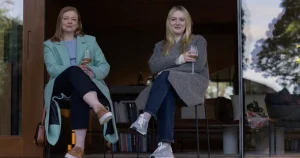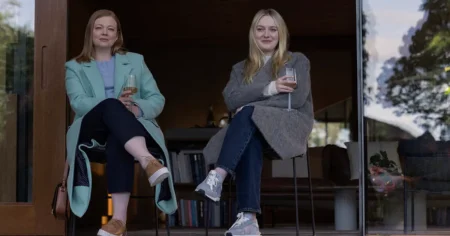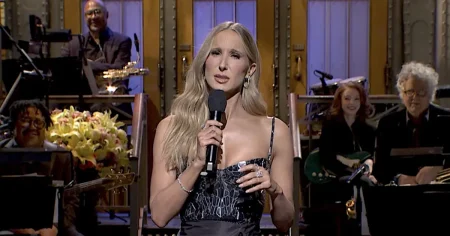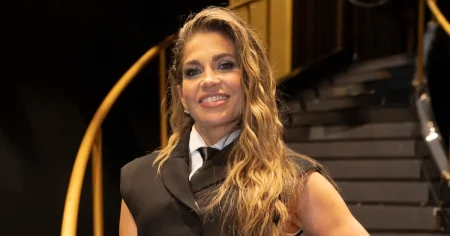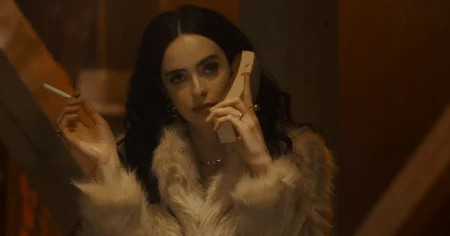“Murder in a Small Town” Stars Embrace Authentic Relationship Challenges Without Typical TV Drama Tropes
In the evolving landscape of television romance, “Murder in a Small Town” stars Rossif Sutherland and Kristin Kreuk are taking a refreshingly different approach to on-screen relationships. The actors recently shared their appreciation for how the show’s second season continues to develop the central relationship between their characters, Karl and Cassandra, without resorting to the overused tropes of love triangles or new romantic interests. This commitment to portraying a realistic, committed relationship facing genuine challenges stands out in an industry often dependent on artificial romantic tension to maintain viewer interest. “I recognize that the heart of the show is the relationship between Cassandra and Karl,” Sutherland explained during an exclusive interview. Despite the constraints of a 42-minute whodunit format, he specifically requested that their relationship maintain substantial screen time in the second season, a wish the writers worked hard to accommodate.
For Kreuk, her primary concern was ensuring her character had meaningful storylines independent of the murder investigations that drive the show’s plot. “For me it was finding something for Cassandra to do that is interesting — in contrast to a murder,” she noted, expressing her desire for her character to have agency in driving certain narratives. The actors’ collaborative approach with the writing team appears to be paying dividends, with Sutherland hinting at discussions already underway for a potential third season. Based on L.R. Wright’s novels, the show follows Police Chief Karl who, alongside his girlfriend Cassandra, investigates mysterious murders in their small community. After establishing their relationship through various challenges in season one, the second season finds them in a more stable place romantically, though far from free of complications.
The new season deliberately moves away from internal relationship conflicts to focus instead on external pressures affecting Karl and Cassandra’s partnership. “I don’t know that there’s ever a real threat of breakup for them — although they do not stay in calm waters the whole time,” Kreuk revealed. “There is turmoil and a lot of it is coming from the outside.” This approach allows the show to explore how established couples navigate difficulties together rather than constantly questioning whether they should be together at all. Sutherland elaborated that while their relationship will certainly be tested, the challenges stem from realistic sources: disagreements, work demands, and the inevitable “tug of war” that occurs in long-term relationships. The danger, as he puts it, isn’t some external love interest, but the more subtle threat that these accumulated tensions might cause them to “fall out of love for each other” – a far more mature and realistic portrayal of relationship challenges.
Perhaps most notably, both actors expressed appreciation for the show’s commitment to avoiding the television staple of love triangles. Kreuk, who admittedly comes “from the land of love triangles” in her previous work on shows like “Smallville,” reflected thoughtfully on this creative choice. She referenced having studied the psychological aspects of triangulation in relationships, noting how traditional TV wisdom suggests that desire must never be fully satisfied to maintain audience interest. Yet she celebrates that “Murder in a Small Town” dares to explore emotional territory beyond just desire and its frustration. “I love that we get to go into other emotions outside of desire,” she explained, highlighting how this approach allows for a more nuanced examination of what constitutes a genuine relationship, with “beautiful layers to Karl and Cassandra’s relationship that you just don’t get to see on television that much.”
The show’s willingness to portray a committed couple working through problems together rather than constantly questioning their compatibility represents a maturation in television storytelling. Instead of manufacturing drama through artificial means like surprise romantic rivals or contrived misunderstandings, “Murder in a Small Town” finds tension and interest in the authentic challenges couples face: differing opinions, communication struggles, and finding ways to support each other while navigating external pressures. This approach acknowledges that long-term relationships contain their own inherent drama without needing to introduce the threat of new love interests. As Kreuk observed, television has often been “caught in keeping that tension alive” through triangulation “because it’s easier,” but this show aims for something more authentic and ultimately more satisfying for viewers invested in the characters’ journey together.
Sutherland summed up their fortunate position in the industry by noting, “We’re lucky because this show is affording the space for those conversations.” In doing so, “Murder in a Small Town” joins a small but growing number of television productions recognizing that audiences can be just as engaged by the complexities of maintaining a relationship as they are by the question of whether characters will get together in the first place. For viewers interested in this more mature approach to on-screen romance alongside compelling mystery narratives, the show airs on Fox Tuesdays at 8 p.m. ET, offering a refreshing alternative to the romantic formulas that have dominated television for decades. As the series continues to develop, it stands as an example of how character-driven storytelling can evolve beyond traditional tropes while still delivering the emotional engagement audiences crave.
